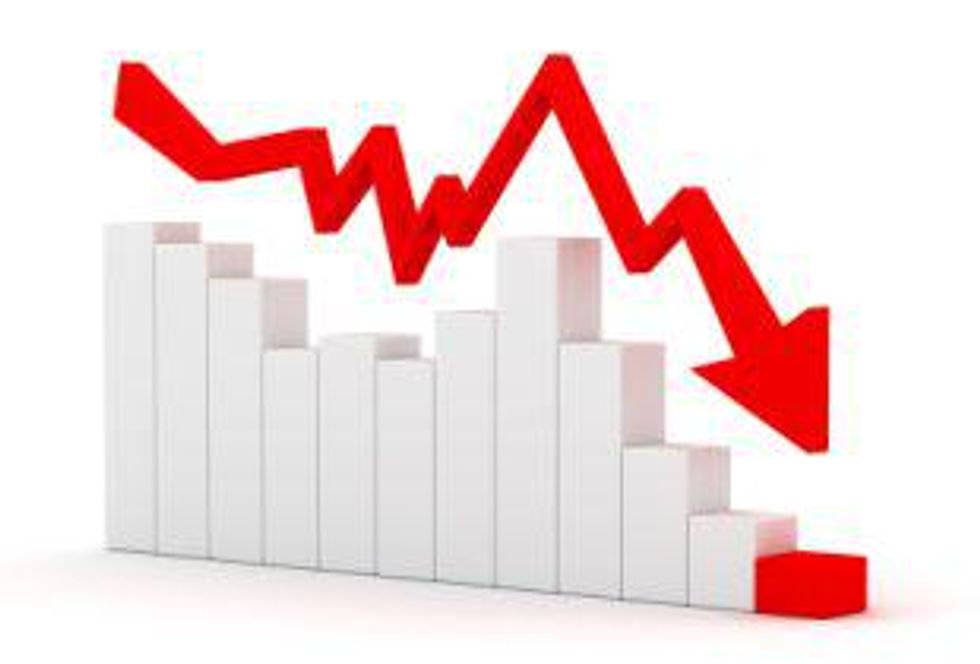This September, gold took part in a massive sell-off as investors moved to liquidate positions in the face of a deteriorating global economic picture. In the end, the metal lost 11 percent of its value.
By Leia Toovey- Exclusive to Gold Investing News
Towards the end of the month, commodities plunged across the board due to growing global uncertainty. A slew of negative sentiment spread, as the Eurozone grappled with its debt problems, and the US, Europe and China all reported weak manufacturing data. On Sept. 21, the Federal Reserve said the US economy faces “significant downside risks, and in the following days the markets collapsed on deepening concern that governments are running out of tools to avert a global recession. The Dow Jones Industrial Average fell 6.4 percent (the most since October 2008); “Dr. Copper” had the biggest slide in three years, and gold plunged the most since 1983. Commenting on the aftermath, analyst Robin Bhar at Credit Agricole SA said “We’re in a downward spiral, and no one knows when it’s going to end. There is a lot of uncertainty at this time as to how demand will develop.”
Safe haven gold, which we have grown accustomed to rallying when the economic outlook sours was, this time, impacted by the sell-off. Gold dipped as investors sold the metal to enhance their liquidity, and strengthening greenback discouraged investment by holders of international currency. “When investors and funds need to raise cash, most often they sell the most liquid and best-performing assets, which places gold and silver under pressure,” Scott Gardner, the chief investment officer at Verdmont Capital SA in Panama, said. “This is what took place in 2008, which was driven by systematic risks emanating out of the financial sector.”
Adding to the bearish sentiment, the CME Group raised its margin requirements on gold by 21 percent. This put a tighter squeeze on most optimistic gold investors, who were trying to hold onto long positions, according to analysts. The CME also hiked its margin requirements for copper and silver.
Despite the recent losses, gold remains one of the best performing assets so far this year, and analysts are still bullish on the metal’s future, forecasting that the current climate, low interest rates in most developed economies and high inflation in the world’s top two gold consumers, will support the metal. “For the longer term, after prices stabilise and life returns to normal, safe haven flow will slowly come back. In 2012, there is a chance that gold could reach $2,000 an ounce,” said Ong Yi Ling, an analyst at Phillip Futures. Even after this month’s decline gold is still up 15 percent. In comparison, copper prices have retreated by 26 percent.
Other key facts that are supportive for gold include the strong physical demand for gold in Asia and robust holdings of gold -backed exchange-traded funds “Volumes have been heavy as investors, on the Exchanges at least, have been forced to dump gold for cash,” said RBS in a weekly note on Thursday. “There has been very little movement in the ETFs, however, signaling that the core holders are not going to desert gold as an important risk hedge.” This is a very important consideration, because if ETF positions unwind, it could put additional pressure on prices.
Looking forward, the market will be closely watching to see if either the US or Europe will engage in monetary easing. “If [a bailout] takes place, it will add large amounts of liquidity to the system, which will be viewed as inflationary,” and hence bullish for gold, said Sterling Smith, analyst with Country Hedging. Also, any hints of monetary easing may spark a short covering rally. This month, heavy shorting contributed to gold’s steep decline, and looking forward, this will likely contribute to gold having a bumpy ride.
Securities Disclosure: I, Leia Toovey, hold no equity interests in any company mentioned in this article.






